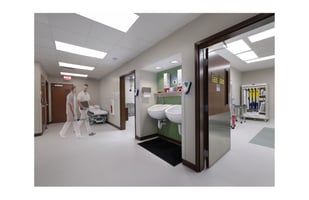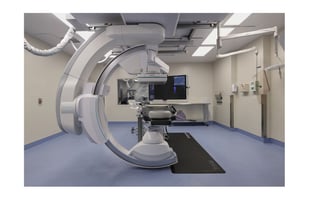It all continued with a deeper dive and a second cup of coffee.
Data Analytics in ASCs – A Holistic View
With over 6 years of involvement in the Architecture field, Preet possesses a strong background in creating spatial experiences that are functional and aesthetically pleasing. Her most recent work includes 4 years of healthcare design experience with Hardaway Sziabowski Architects.
It all started with a curious scroll and a cup of coffee.
While exploring ways to gain a professional edge, I discovered the intriguing subject of data analytics and wondered how could it be incorporated into healthcare architecture. After giving it further thought, I realized that data analytics is a tool not yet widely adopted in the industry and it’s application in architecture could be transformative.
The intersection of data analytics and architectural design, especially in healthcare, is still a road less traveled. And yet, the more I thought about it, the more the pieces started to fit.
- How can I use data analysis in my role as a designer?
- Can data help us create more efficient and user-friendly surgery centers?
- What insights can we gain by collecting, organizing, and analyzing the numbers behind how ASCs are used?
This article is an introduction of the series exploring how data analytics can be integrated into the design process of ASCs, and how data can quietly, yet powerfully, shape the spaces where healing happens.
What Is Data Analytics?
At its core, data analytics is the art and science of turning information into insight. It is the process of collecting, organizing, and interpreting data to guide better decision-making.
So, what happens when we apply data analytics to the design of spaces like ASCs?
Imagine designing a space not just based on aesthetics or what has been done before, but on how people move, interact, work, and heal in it.

In more practical terms, data analysis in architecture would mean collecting and applying evidence from user feedback, energy use and workflow patterns to inform every design choice and optimize operations, as well as enhance patient and staff experience.
What Data Points should be considered?
Patient Throughput
Staff Movement & Efficiency
Supply Flows – Equipment Upkeep
Health Inspection trends
Infection Control Metrics
Noise Levels & Acoustic Performance
Accessibility & Inclusivity Metrics
Energy Use Over Time
Air Quality & HVAC Performance
Client Decision Making Trends
Regulatory Guidelines

Why It Matters for ASCs?
In fast-paced, high-efficiency healthcare environments that are built to serve more patients, more efficiently, without compromising care quality, design cannot just be beautiful—it must be smart.
Wayfinding: Use real navigation patterns to make spaces more intuitive
Sanitation and infection control: Design workflows that minimize contamination risks
Staff productivity: Reduce wasted movement and streamline daily operations
Visibility and safety: Ensure staff can monitor patients without constant movement
User experience: Optimize waiting times, comfort, and satisfaction through behavioral data
Energy efficiency: Design systems around actual usage to reduce costs and carbon footprints
Coming up –
“Data Analytics in ASCs – Applying Data to Design”




